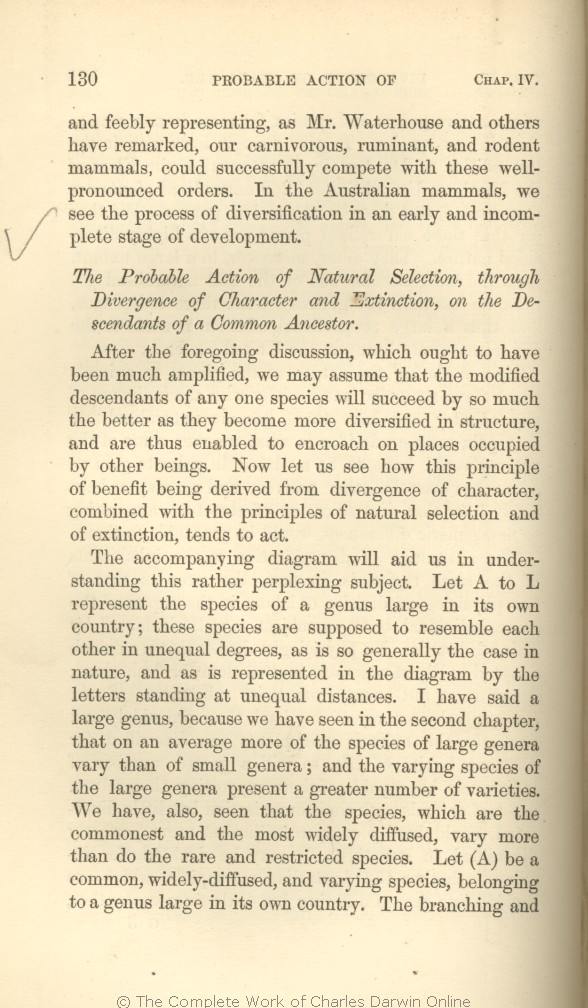and feebly representing, as Mr. Waterhouse and others have remarked, our carnivorous, ruminant, and rodent mammals, could successfully compete with these
well-pronounced | well-pronounced 1859 1860 1861 1866 1869 | | well-developed 1872 |
|
The
Probable
|
Probable
1866 1872 | |
Probable
1869 |
|
Action
1866 | |
Results
1869 | |
Effects
1872 |
| OMIT 1866 |
|
the Action of
1869 |
|
the Action of
1872 |
|
Natural
1866 1872 | |
Natural
1869 |
|
Selection,
1866 | |
Selection
1869 | |
Selection
1872 |
|
through
1866 1872 | |
through
1869 |
|
Divergence
1866 1872 | |
Divergence
1869 |
|
Character
1866 1872 | |
Character
1869 |
|
Extinction,
1866 |
|
Extinction,
1869 |
|
Extinction
,
1872 |
|
Descendants
1866 1872 | |
Descendants
1869 |
|
Common
1866 1872 | |
Common
1869 |
|
Ancestor. 1866 | |
Ancestor.
1869 | |
Ancestor. 1872 |
|
After the foregoing discussion, which
ought to have | ought to have 1859 1860 1861 1866 |
| has 1869 1872 |
| amplified, 1859 1860 1861 1866 | | compressed, 1869 1872 |
| may 1861 1866 1869 1872 | | may, 1859 1860 |
| ..... 1861 1866 1869 1872 | | I think, 1859 1860 |
| by 1859 1860 1861 1866 1869 | by 1872 |
| ..... 1860 1861 1866 1869 1872 | | great 1859 |
| ..... 1866 1869 1872 | | will 1859 1860 1861 |
| tends 1866 1869 1872 | | tend 1859 1860 1861 |
|
|
The accompanying diagram will aid us in understanding this rather perplexing subject. Let A to L represent the species of a genus large in its own country; these species are supposed to resemble each other in unequal
degress, | degress, 1866 | | degrees, 1859 1860 1861 1869 1872 |
| we have seen 1859 1860 1861 1866 1869 |
| as we saw 1872 |
| that 1859 1860 1861 1866 1869 | that 1872 |
| of the species of 1859 1860 1861 1866 1869 |
| species vary in 1872 |
| vary 1859 1860 1861 1866 1869 | vary 1872 |
| of 1859 1860 1861 1866 1869 | | in 1872 |
| widely diffused, 1861 1866 1869 1872 | | widely-diffused, 1859 1860 |
| do the rare and restricted species. 1866 1869 1872 |
| rare species with restricted ranges. 1859 1860 1861 |
| branching and 1866 1869 1872 |
| little fan of 1859 1860 1861 |
|









